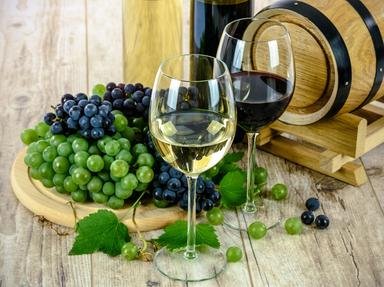Quiz Answer Key and Fun Facts
1. Wine can only be labeled champagne if it meets which of the following qualifications?
2. Which one of these men is often credited with the creation of champagne?
3. What is a champagne "coupe"?
4. Which of the following things has champagne been used for in the past?
5. Which one of these grapes is NOT used in the production of champagne?
6. What is the unusual art of sabrage?
7. Part of the process of champagne making, just what is 'riddling'?
8. Many of the different sizes of champagne bottles have biblical names. That being said, which of these is NOT a name used for a champagne bottle?
9. If you drop an olive in a glass of champagne, it will float.
10. To make pink champagne all you do is add cherry brandy to the champagne before the fermentation process.
Source: Author
dcpddc478
This quiz was reviewed by FunTrivia editor
WesleyCrusher before going online.
Any errors found in FunTrivia content are routinely corrected through our feedback system.
